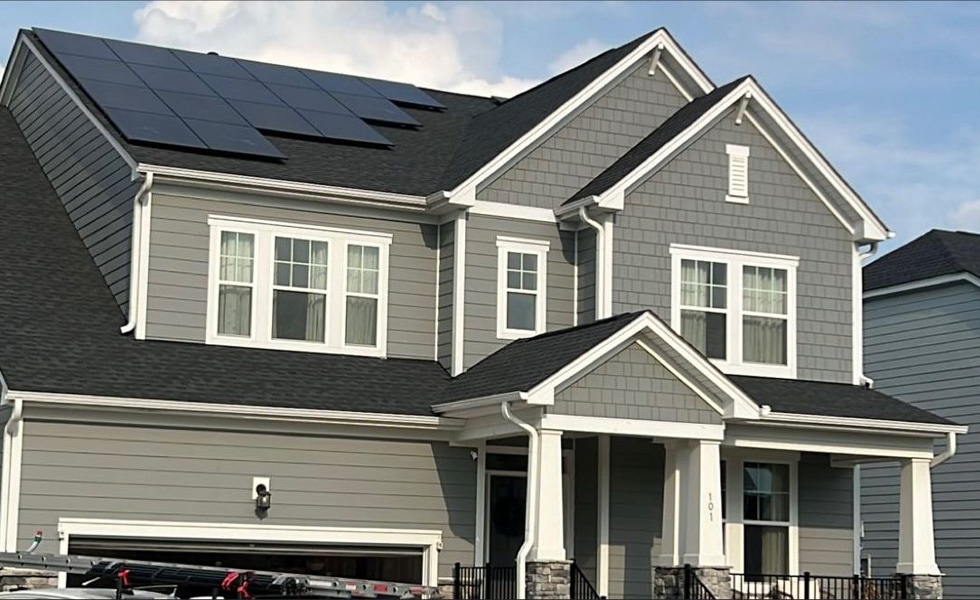
Home energy storage products refer to energy storage systems used in home user scenarios. They are usually installed in combination with household photovoltaic systems to provide power to home users. Saving electricity bills is an important motivation for users to allocate storage. The peak electricity consumption of household users is at night, and the time of electricity generation and electricity consumption do not match. Configuring energy storage can help users store the excess electricity generated during the day for use at night; on the other hand, electricity prices are different at different times of the day, and there are peaks. At valley prices, the energy storage system can be charged through the power grid or self-used photovoltaic panels during valley hours, and discharged for load use during peak hours, thus avoiding the need to use electricity from the grid during peak hours, effectively saving electricity bills. The core of the household photovoltaic storage system is photovoltaic + battery + energy storage inverter. Household energy storage and household photovoltaics are combined to form a household photovoltaic storage system. The photovoltaic storage system mainly includes battery cells, energy storage inverters (bidirectional converters), component systems, and other parts. A typical system is generally 5KW (component + inverter) equipped with 10kWh (energy storage battery) or 10kW+10kWh. The battery core is the core of the energy storage system, accounting for about 45-50% of the cost; the energy storage converter can Control charge and discharge and convert AC to DC accounts for about 10-15% of the cost; the component system, that is, the photovoltaic system, is used for solar power generation, accounting for about 20-25% of the cost; the installation cost will rise from 10,000 to 20,000 in 2021 Around 15-20%. The following are four common household photovoltaic + energy storage system types and characteristics, which can give everyone an understanding of the common household energy storage systems on the market:
Hybrid home photovoltaic + energy storage system
Hybrid photovoltaic + energy storage systems generally consist of solar panels, lithium batteries, hybrid inverters, smart meters, CTs, power grids, grid-connected loads, and off-grid loads. This system can realize photovoltaic charging of batteries directly through DC-DC conversion, and can also realize bidirectional DC-AC conversion for charging and discharging of batteries.
working logic
During the day, photovoltaic power generation first supplies the load, then charges the battery, and finally, the excess power can be connected to the grid; at night, the battery is discharged to supply the load, and the grid supplements the shortfall; when the power grid fails, photovoltaic power generation and lithium batteries only supply power to off-grid loads and are connected to the grid. The end load cannot be used. In addition, the system also supports users to set their own charging and discharging times to meet users' power needs.
Features
The system is highly integrated, which can significantly reduce system installation time and costs.
Intelligent control can be realized to meet users’ electricity needs
It can provide users with a safe power guarantee when the power grid is out.
Coupled home photovoltaic + energy storage system
Coupled photovoltaic + energy storage system, also known as an AC retrofit photovoltaic + energy storage system, generally consists of photovoltaic components, grid-connected inverter, lithium battery, AC coupled energy storage inverter, smart meter, CT, power grid, grid-connected load, and off-grid load. This system can convert photovoltaic power into AC power through the grid-connected inverter, and then convert the excess power into DC power through the AC-coupled energy storage inverter and store it in the battery.
working logic
During the day, photovoltaic power generation first supplies the load, then charges the battery, and finally, the excess power can be connected to the grid; at night, the battery is discharged to supply the load, and the grid supplements the shortfall; when the grid is out of power, the lithium battery only supplies power to the off-grid load, and the grid-connected load cannot use. In addition, the system also supports users to set their own charging and discharging times to meet users' power needs.
System Features
Existing grid-connected photovoltaic systems can be transformed into energy storage systems with low investment costs.
It can provide users with a safe power guarantee when the power grid is out.
Compatible with grid-connected photovoltaic systems from different manufacturers
Off-grid home photovoltaic + energy storage system
Off-grid home photovoltaic + energy storage systems generally consist of modules, lithium batteries, off-grid energy storage inverters, loads, and diesel generators. This system can realize photovoltaic charging of batteries directly through DC-DC conversion, and can also realize bidirectional DC-AC conversion for charging and discharging of batteries.
working logic
During the day, photovoltaic power generation first supplies the load and then charges the battery; at night, the battery discharges to supply the load. When the battery is insufficient, diesel generators supply the load.
System Features
Can meet daily electricity needs in areas without power grid
It can be combined with a diesel generator to supply the load or charge the battery
Most off-grid energy storage inverters do not have grid-connection certification. Even if the system has a power grid, it cannot be connected to the grid.
Photovoltaic energy storage energy management system
Photovoltaic energy storage energy management system. This system generally consists of photovoltaic modules, grid-connected inverter, lithium battery, AC coupling energy storage inverter, smart meter, CT, power grid, and control system.
System Features
The control system can receive and respond to external instructions, respond to the system's power demand, and accept the system's real-time control and scheduling.
Can participate in the optimized operation of the power grid to make electric energy use more efficient and economical
Reach power focus on off-grid solar systems, and provide high-quality lithium storage batteries.
Reduce the upfront investment cost of solar energy systems and never run out of power at any time and anywhere
